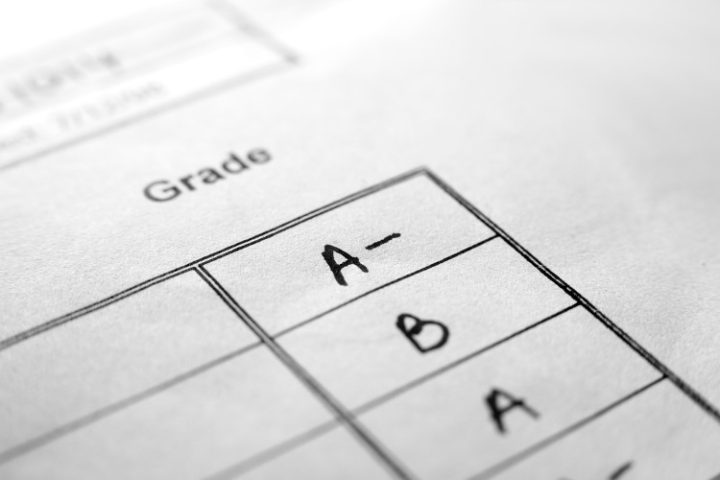
They used to be report cards — now they’re distort cards. As a consequence, says education expert Cindi Williams, parents are oblivious to how their kids are failing in school.
And failing they are. In a Friday article, Williams laments how focus groups have shown that even in districts where student performance is rock bottom, parents believe their kids are succeeding academically. The result is that even though states and localities spend billions in Covid relief dollars to provide extra instructional programs for failing students, they’re not often utilized because dad and mom never get an accurate diagnosis.
As Williams, co-founder of and senior advisor at Learning Heroes, writes:
This month, Gallup and Learning Heroes published a survey of K-12 public school parents that reveals a shocking fact — nearly 9 in 10 parents believe their child is at or above grade level, even after the pandemic. In contrast, the actual percentage of students working at grade level, according to mounds of academic performance data such as the National Assessment of Educational Progress and Harvard’s Center for Education Policy Research, is about 50% at best. This “awareness gap” between parent perception and student performance is a massive problem.
When we focus on underserved student populations, data shows that grade-level readiness is often even lower and the parental “awareness gap” is greater. In New York City, ninety percent of parents believe their eighth grader is working at grade level in math. But only about a quarter of those students (26%) are at grade level or above in math. That gives those parents an “awareness gap” of 64 points.
What is driving the “awareness gap” parents are experiencing? The culprit may be report cards.
According to our survey data, eighty percent of parents say their students receive B’s or better on report cards. What parents may not realize is that report card grades don’t mean a child is working at grade level. Report card grades are a reflection of multiple factors — including behavior, effort, and homework completion — as well as the mastery of reading and math skills. When one grade bundles all of those things together, mastery can get lost or covered up.
Worse still, report cards can also reflect grade inflation, which is when students are given better grades for worse performances. Educational reform group the XQ Institute warns about this phenomenon:
In the past decades, grade inflation in high schools has been on the rise. A 2017 study by the College Board found that between 1998 and 2016, the average high school GPA went up from 3.27 to 3.38. This means that the proportion of students with A grades increased from 38.9 percent of the graduating class of 1998 to 47 percent of the graduating class of 2016. Yet during that same period, SAT averages decreased, suggesting that the rising grades did not correlate with rising student achievement.
This trend has continued. A study conducted by the ACT of more than 4 million high schoolers who took the ACT between 2010 and 2021 showed that, after 2016, the number of A students taking the ACT surpassed the number of B students. Yet as grades rose, achievement fell, with today’s A students scoring lower on the ACT than A students a decade ago. These results are backed up by a study conducted by the U.S. Department of Education, which found a similar increase in GPA between 2009 and 2019, coupled with a decrease in 12th-grade math scores on the National Assessment of Educational Progress (NAEP), a national achievement test.
In other words, educational “achievement” today is quite often an illusion, a lie, as are so many things in contemporary society. There are many reasons why grade inflation occurs, too, “such as providing an easier grading system, a decrease in standards, or a desire to keep students from failing a course,” XQ writes, being most charitable. But there’s a damning reason as well.
If schools upheld standards and failed a massive number of students — which would be the result — it would reflect badly upon them. Moreover, some parents might then withdraw their children from the schools, and the institutions would lose funding. So educators have a great incentive to practice social promotion.
Yet the picture is even worse than this indicates. Just consider input from MSN.com commenter “MM Laurent,” responding to Williams’s article:
I have been substitute teaching for 15 years across different states. Parents, schools and teachers allowing students to use cell phones ALL day in school looking at BS on social media. They are addicted and everyone is turning a blind eye. They take pics of another work and pass it on via cell phone. They are not interested in learning. Many teachers are afraid to discipline because students get irate and disrespectful. Many teachers just give minimal work and pass students. OUR FUTURE IS IN TROUBLE!
Many other observers will, of course, attest to the above. As to the solution, another commenter writes that it “is long past time to bring strict discipline back into schools.” True. As I wrote years ago, discipline and obedience are prerequisites for education for a simple reason:
How can someone learn from you if he’s not first willing to listen to you?
The problem, however, is that this concept is alien to our now fatally permissive society. It’s a systemic issue, too, with parents, teachers, administrators, school-board members — all and sundry — possessed of a soft, über-feminine, pusillanimous spirit. Why, many people’s concept of punishment today is a “time-out”!
What’s more, even parents who claim to value discipline are often found wanting when their little snowflake complains about the “mean teacher.” (I used to work with kids and experienced this.)
We can spend billions more on “education” and embrace all the newfangled pedagogies we want, but until we shed our weak, impotent spirit and rediscover virtue, it will all be for naught.
Shop For Night Vision | See more…
Shop For Survival Gear | See more…
-
Sale!

Portable Mini Water Filter Straw Survival Water Purifier
Original price was: $29.99.$14.99Current price is: $14.99. Add to cart -
Sale!

Tactical Camo Nylon Body Armor Hunting Vest With Pouch
Original price was: $49.99.$39.99Current price is: $39.99. Select options This product has multiple variants. The options may be chosen on the product page


















































